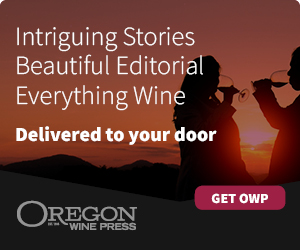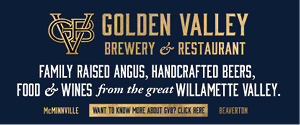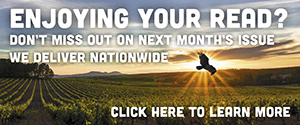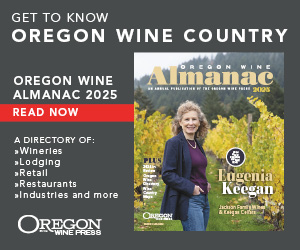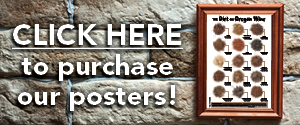A Taste of Belonging
What Oregon wine country taught me
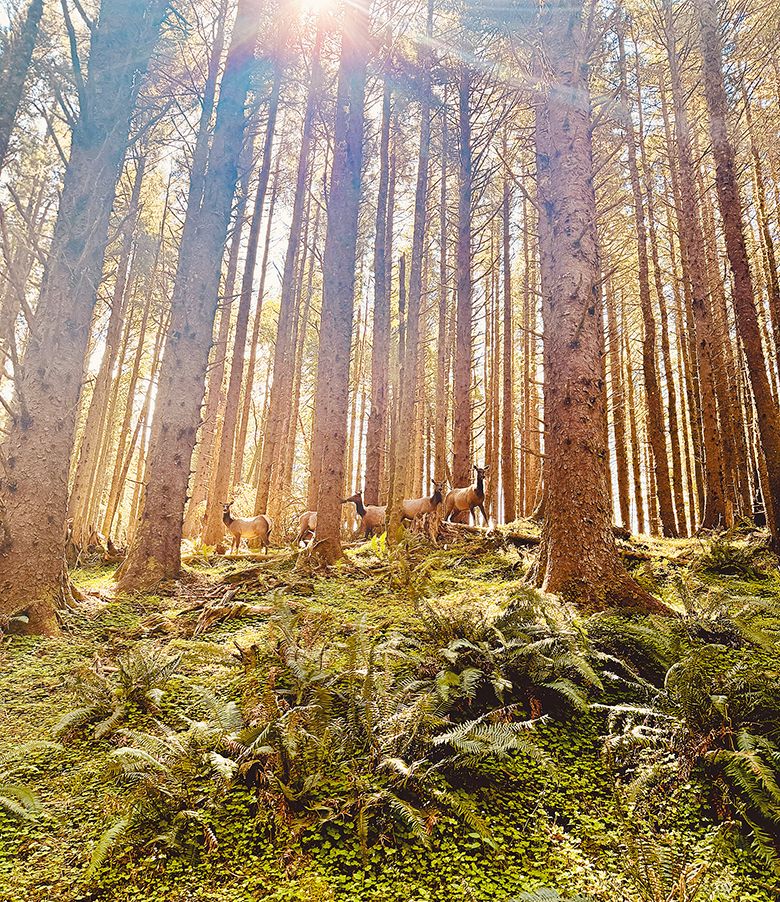
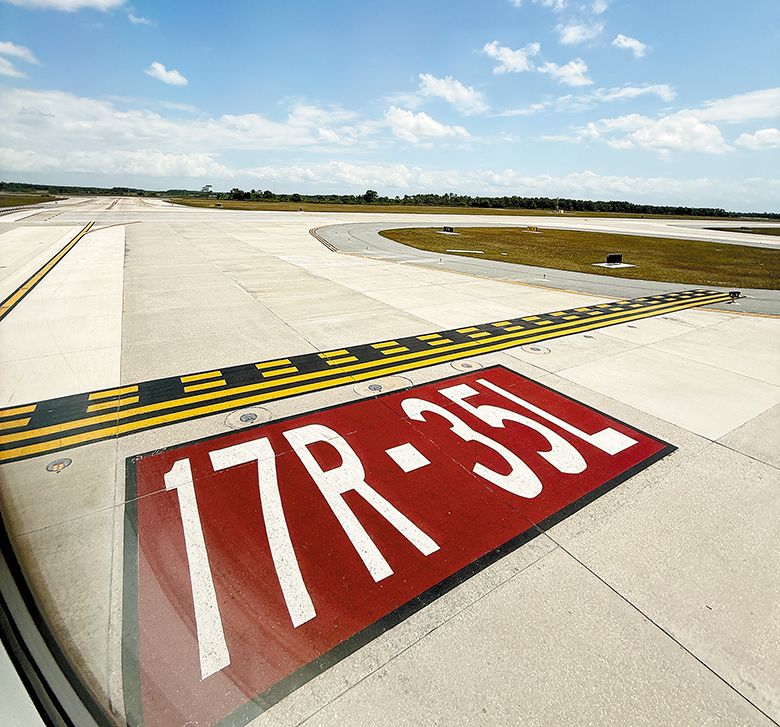
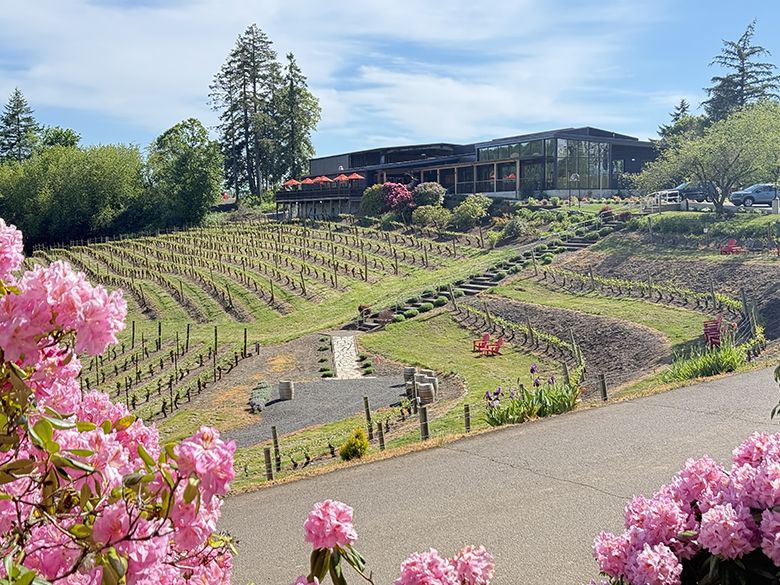
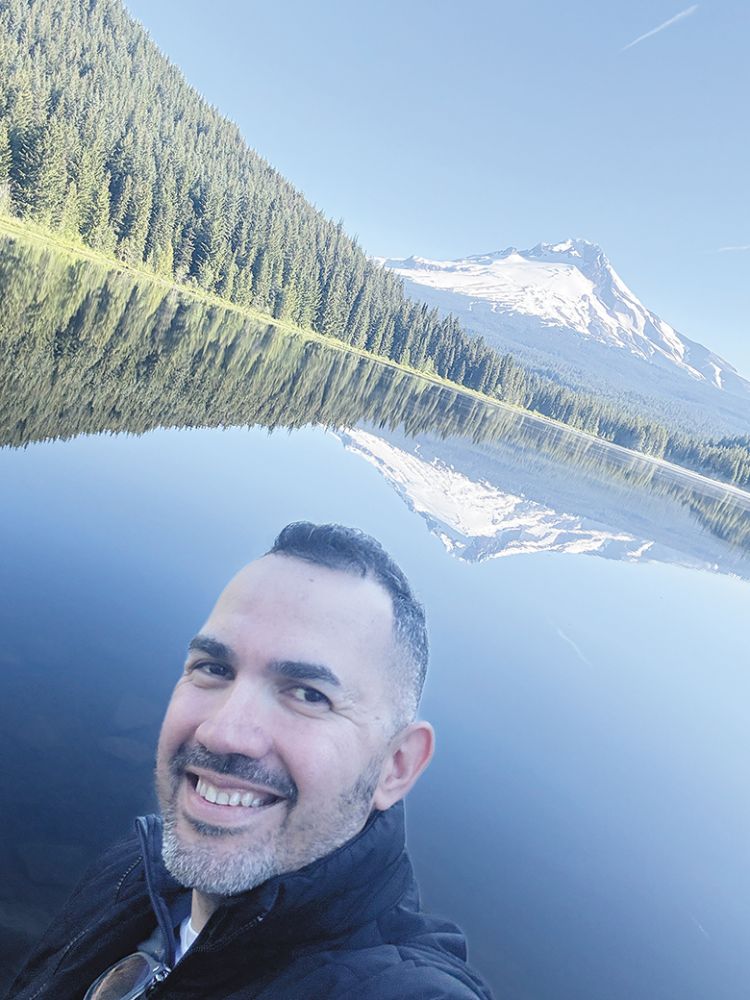
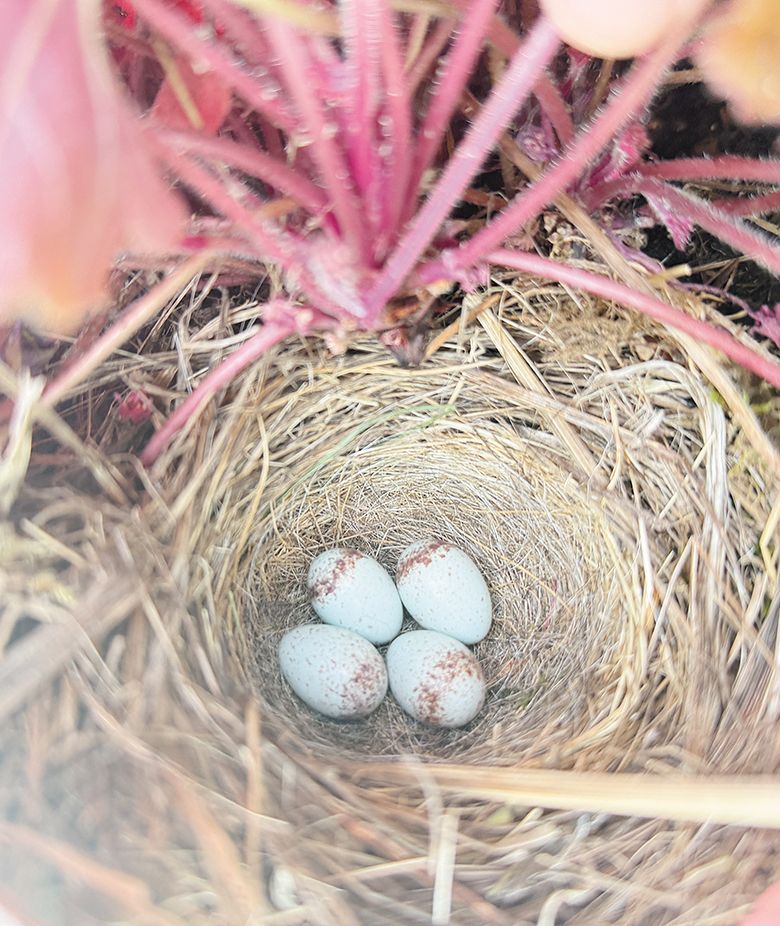
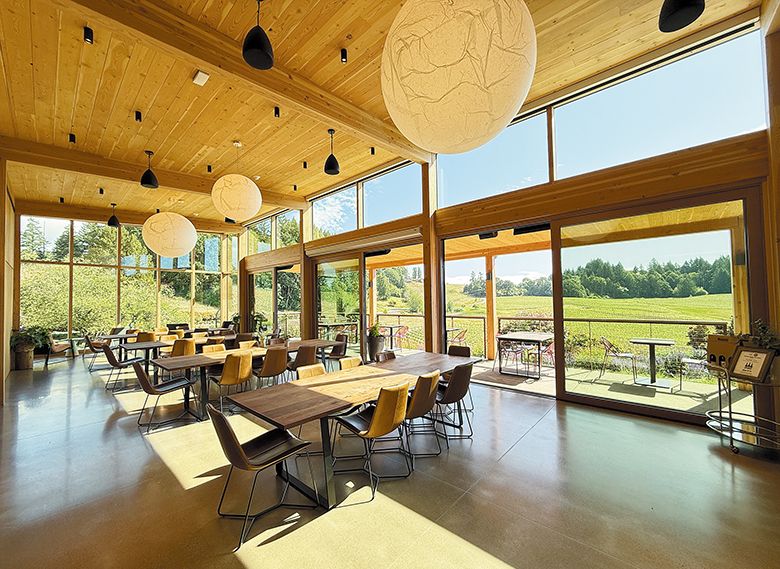
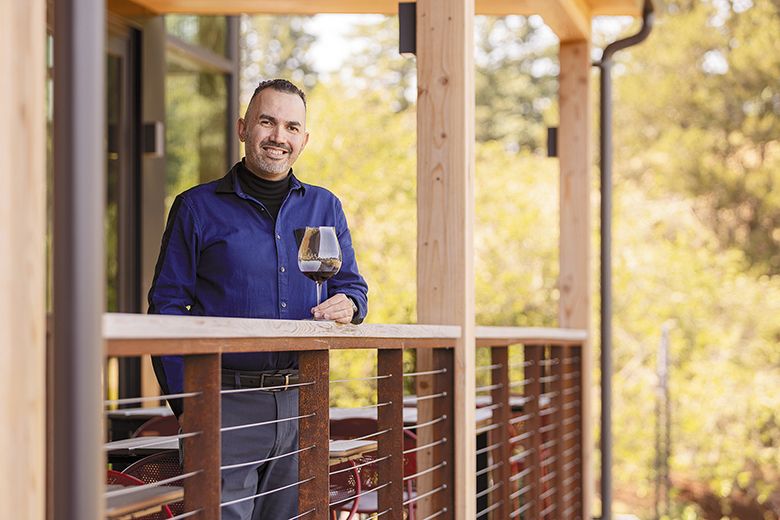

By Luis Romero
I left Florida in a haze—literally and figuratively. I was sick with the kind of sinus pressure that makes every descent a test of pain tolerance and resolve.
By the time we reached Charlotte, my head felt like it would split open. I traded texts with my family doctor, who also happens to be a relative: pain above my left eye, burning tears, the smell of smoke—was I having a stroke? It turned out the smoke was real, coming from a barbecue pit at a restaurant in the airport terminal. Still, I remained resolute through the indignity of navigating airport chaos, including a touch of drama as I rescued my boarding pass from a stranger who thought he’d been called up for an overbooked flight due to broken seats on the aircraft.
We arrived in Portland late in the evening, chasing the final rays of sunlight that painted the runway orange and yellow back in Charlotte and shone majestically over the Mississippi River. We had crossed the Rubicon, and there was no return. The first hints of Pacific Northwest hospitality greeted us– cool, clean, with a beautiful canopy of wood beams at the terminal’s ceiling offering a reprieve from the perils of modern travel. The next morning, we drove southwest through rolling hills and past the old steel mill, dipping into McMinnville as sunshine caught on the colored storefronts of Third Street. At Bierly Brewing, we enjoyed both gluten-free fried pickles and beer– the perfect mix of Florida and Oregon.
The house we rented was functional– a bit spartan, not warm, but surrounded by cypress and with enough privacy to exhale for the first time in days. Our host beamed a warm smile, making the house feel more personal. We felt grateful for the opportunity to care for her home while making it our own for the summer.
That first night, I listened to the creaks of wood and the foreign hush that comes with a real drop in temperature. The air here wraps around you differently, like an invitation and a warning.
Awakening to Oregon’s Spring
I slept badly the first night, as I always do in a new place– the sound of settling beams, a floorboard’s protest, and the unfamiliar aroma of a different landscape. In the morning, I walked the neighborhood, mug in hand, trying to map where I’d landed by watching the locals. Here, pride blooms in gardens: wild riots of color, every yard a contest of perennials and annuals, meadows and carefully mowed lines.
There is a vibrancy to spring in Oregon. The sun filters through the tree canopy, dappling the sidewalks in a shifting mosaic of light and shadow. Every morning, I hear the call of lawn mowers and weed whackers. I notice the low rumble of recycling trucks, observing how many bins and color codes are required just to keep up with the town’s sense of order. It’s so unlike Florida, where even the recycling is likely to end at landfills, the only “hills” of the state.
We live next to the high school, where mornings are communal: pickups rattle awake to take men to work, while SUVs appear with sleepy visitors along the center of town. Everyone, it seems, takes a moment to appreciate the air. I feel like both a ghost and a voyeur, slipping into someone else’s rituals.
In the vineyards, workers descend in a swarm during my drives. Oregon’s winemaking is different– more attuned to the land and equally conscious of the weather, whose effects can prove pernicious if left unattended. In the distance, two tractors perform a mating dance while spraying for mildew; May proved to be wetter than anticipated, and no chance is taken at the onset of budbreak. The land grounds both the landscapes and the practices at the vineyards, dictating the role each worker plays in bringing this year’s crop to a successful yield.
Oregon Is Naturally Beautiful
Oregon’s beauty insists on your attention– majestic and wild, layered in every shade of green. The Pacific cliffs slice into the horizon, crowned with wind and fog. I took my first hike here as a sort of baptism: over six miles, twelve hundred feet up and down, legs burning but spirit settling. The reward: a vista of oceanfront I shared with an elk herd grazing in the trees. Here, the cold air and salt spray remind me nature is not a luxury– it’s included with the price of admission.
Even the weather participates in the show. Spring is a study in contrasts– rain, then sudden sun, a landscape waking up after months of gray. Wildflowers explode in reds and yellows, clover fields glowing beside sleeping vines just starting to bud. It’s not the manicured prettiness of Florida or the golden hills of Napa; it’s a place that demands attention, labor, and respect.
Oregon wine country’s commitment to sustainable farming practices is apparent. Nearly every vineyard and winery sign promotes LIVE or organic certifications.
At Elk Cove Vineyards, where I work, low yields are imperative to support quality and proper bunch development during the growing season. The use of wildflowers and cover crops is also common, nurturing the land while also serving as natural pest control. These practices shape the unique, varied characteristics of each single-vineyard wine produced at the estate.
A Sense of Community
The town’s charm is a patchwork: working-class roots, new money from wine tourism, a surprising number of vegan bakeries and the oddest blend of politeness and ruggedness I’ve ever seen. Downtown is eclectic and darling, attended by a community that seems, on the surface, mismatched– but in practice, deeply caring and woven into the lives of its residents.
There’s a sweetness to McMinnville’s social life– a small-town energy that feels more lived-in than curated. I noticed it at the UFO Festival, the sort of local carnival where floats toss candy to children and the entire town feels conspiratorial. The shouts from high school track and baseball games echo just a block away from the house– these are the sounds of belonging.
People here look you in the eye and greet you at the grocery store. At the bakery, they ask how you’re settling in… and mean it. Even in restaurants, the pace is slower, the questions a little less perfunctory. There’s a pride in the familiar, and yet enough openness to let a stranger like me become a regular within weeks.
The town’s population is mostly homogeneous, with the cultural memory of Scandinavian and Eastern European settlers. Here, the new wave– farmworkers, Portland weekenders, young professionals– mixes in, not always seamlessly, but without friction. Americana is alive here, along with the possibilities of a new version: more inclusive and gluten-free.
Thus far, every experience I’ve had has reflected a sense of community and solidarity; even cold emails and calls to the industry are responded to with warmth and eagerness to help. At the winery, we regularly promote events bringing both the community and other producers together, fostering the idea we all rise together like the tide. That sense of collective well-being and community grounds both the wine industry in Oregon and the communities around it.
Life Working at the Winery
My commute is a meditation: country roads through Carlton and Yamhill, past wineries and farms. The sky opens as I approach the vineyard on a winding road. Elk Cove is both old and new– family-founded in the 1970s, with recent renovations bringing a touch of modern efficiency to its country soul. Four electric vehicle chargers sit beside a fleet of winery equipment, including some slated to be replaced soon. Here, even the John Deere “gator” runs on batteries now.
The team is a blend of personalities and backgrounds. Adam, who recently joined as tasting room manager, talks in a constant stream of consciousness. He’s well-traveled and versed in topics ranging from wine to music, and the imperative need to know how to operate a forklift to work in a winery. Shelby, transplanted from the East Coast, hired me. She gave me a rundown of all the wines on my first day, lining up glasses on the wooden table– so much information… all I could remember was the smell of violets and the taste of cherry and clove from the Pinots. Heather, one of the winemakers, whose facility tour was both practical and inspiring, is often seen in the barrel rooms or the fields, her water bladder and hose always on her back.
The winery is a museum, a collection of memories from the family who founded it. Now the second generation stewards its growth and prominence in the Valley. The tasting room is filled with quirks and charm– mismatched Persian rugs, large farm tables and a kitchen time-trapped in the 1980s. It’s less Disney attraction and more “mi casa es su casa,” where everyone pitches in with dishes at the end of the day.
It’s a far cry from Napa, where I poured for the wealthy (and wealth-aspiring) in an ivory tower tasting room, detached from the mechanics of real winemaking.
Here, wine is a language everyone speaks, and everyone has an opinion. The team is teaching me as much as I’m sharing with them– a slow negotiation of boundaries, trust and humor. Experiences here are more personal and nuanced, including the ability to pour and sell glasses and bottles of wine for consumption– a departure from strict Napa regulations, creating a true division between tasting rooms and full-service bars and restaurants.
The winery’s production is based on Pinot Noir and Pinot Gris, with Chardonnay, Riesling, Pinot Blanc and a relatively new sparkling program bringing up the rear. It’s a traditional lineup with some exciting, more distinctive offerings for those willing to venture beyond the headlining array of single-vineyard Pinot Noirs.
Finding My Tribe: The Wine Community at Large
Belonging here is slow, not instant. It’s in the repeated invitations to join for a glass after closing or the recommendations for the many wineries I must visit to get a lay of the land. It is shared laughter over a cork gone rogue or a guest’s awkward tasting note. One thing is certain: everyone assures me I will have the best summer, and I’ve begun to agree with them.
Staff members have a different story– Chloe plans an expat life, and Anne, a lawyer traveling from Portland to work on the weekends while planning her husband’s 40th birthday party (emotional support llamas included). Not to mention the guests and club members who return, some each week. I see the outlines of a tribe forming. It’s less about fitting in than about being woven into the fabric of daily life, welcomed not as a novelty, but as a contributor.
The real joy comes in the small moments: striking up a conversation with a stranger about wine, hitting the light just right on the drive home while picking up pizza in Yamhill, a guest who asks for you by name, the evening light on the vines after the last table is cleared. These are the tokens of a slow-growing sense of place, the wine community revealing itself one sip, one bottle, one story at a time.
Coming Home
The house that once struck me as cold now feels like home. I slip off my boots and vest in the mud room after a day at the winery, the smell of dinner drifting out to the porch where we eat quietly al fresco. In the mornings, I savor my coffee in the garden, watching the neighbor’s poodle stretch in the sun. After weekend drives back from the coast– salt still in the air, legs pleasantly tired– I find myself already longing for the comfort of our “spartan” home with its odd assortment of furniture. On Monday mornings, I wake and realize my anxiety of being out of place has quietly given way to gratitude.
Wine country didn’t just teach me to taste differently — it changed how I see belonging. It’s a daily practice, an openness to new landscapes and people, a willingness to let the slow rhythms of community and land work on you. I arrived in Oregon searching for an adventure. Instead, I found home is built one careful, sensory day at a time.
Luis Romero, M.S., M.A., is a wine, beer and spirits educator, certified sommelier, beverage specialist, and owner of the International Beverage Academy, an approved program provider offering WSET certifications in English and Spanish to professionals and enthusiasts alike. With more than a decade of university teaching and beverage education experience, Luis has spent his last two summers working in wineries across the West Coast. This season, he’s pouring at Elk Cove Vineyards while preparing for his WSET Diploma exam. His writing has appeared in Bon Appétit, Plate Magazine, among other digital and printed publications. His passion for life is only rivaled by his desire to learn and share new experiences with readers and loved ones alike. Sign up for his online courses at www.beveragecertified.com.


